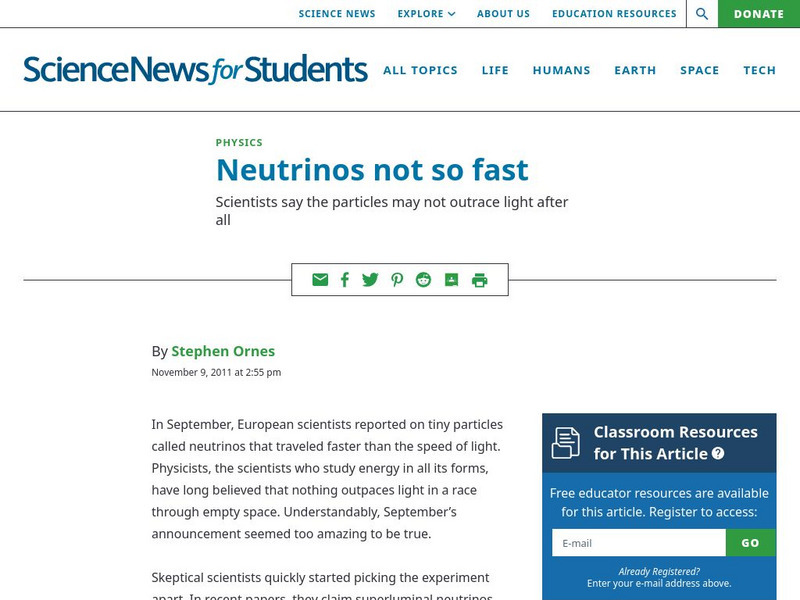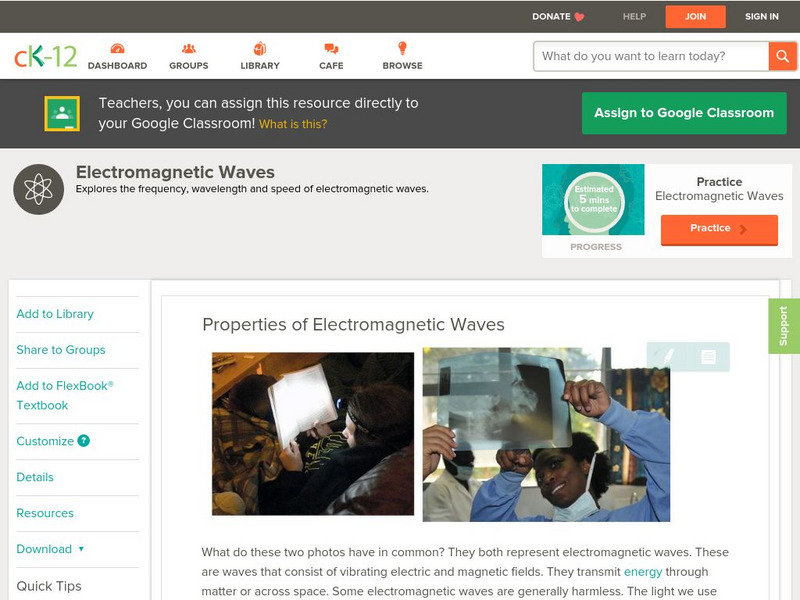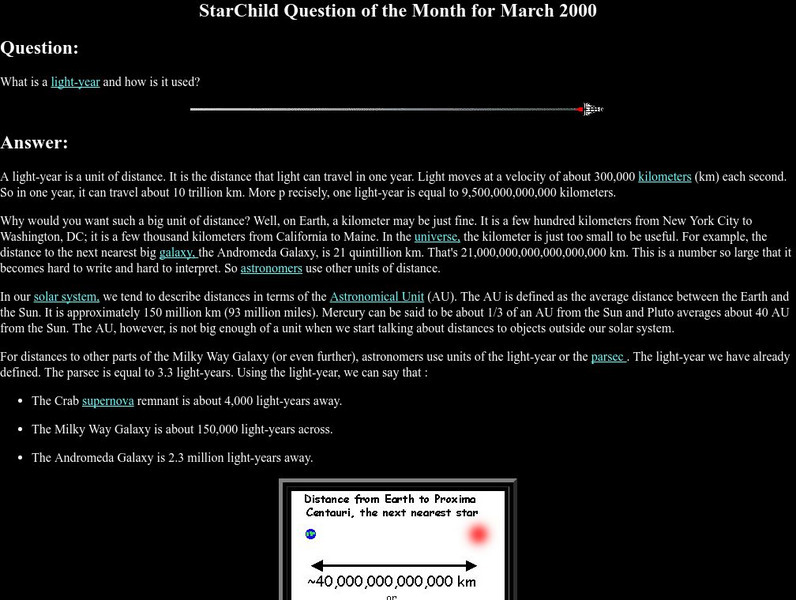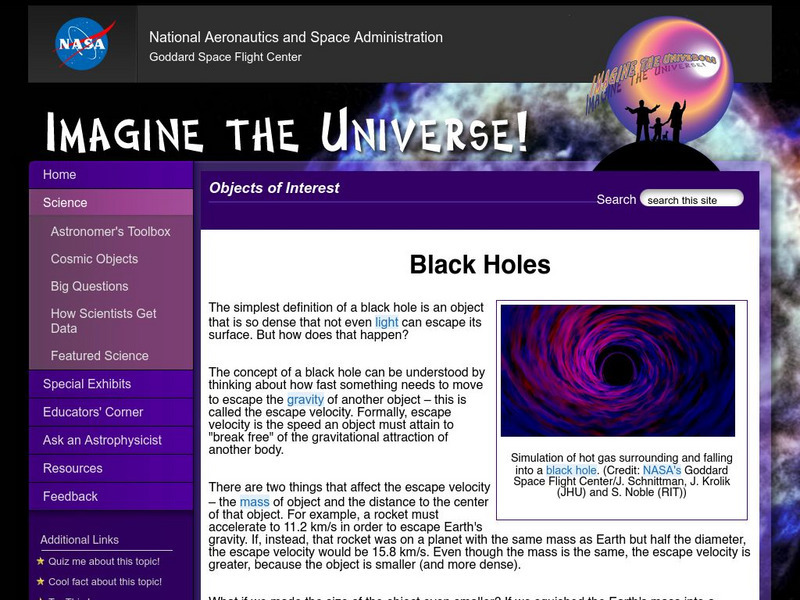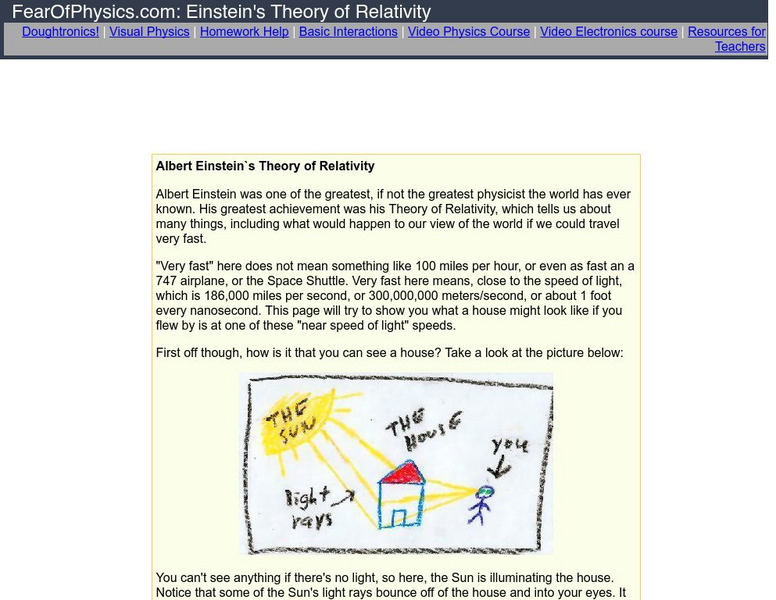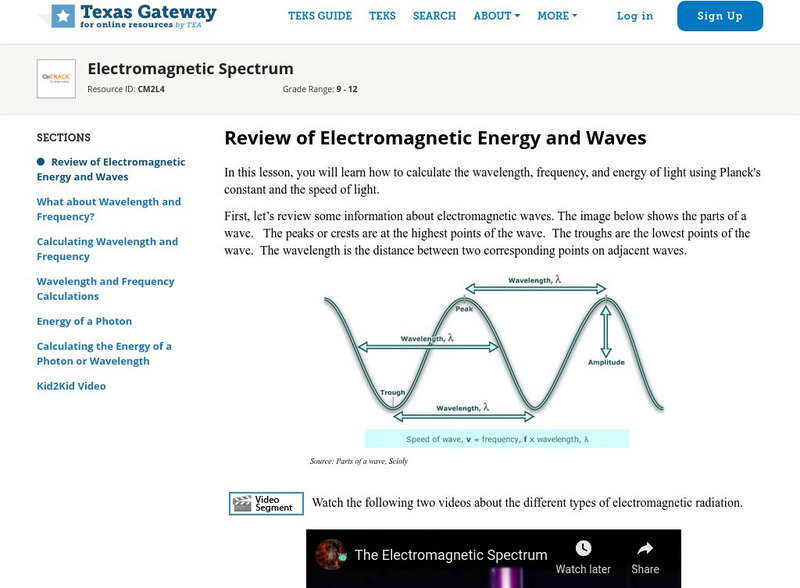Hi, what do you want to do?
CK-12 Foundation
Ck 12: Physics: Wave Optics Study Guide
A study guide for concepts related to wave optics.
TED Talks
Ted: Ted Ed: How Simple Ideas Lead to Scientific Discoveries
Educator, Adam Savage, shares two astounding examples of profound scientific discoveries that came from simple, creative procedures: Eratosthenes' calculation of the Earth's circumference and Hippolyte Fizeau's measurement of the speed...
Society for Science and the Public
Science News for Students: Neutrinos Not So Fast
Discusses the validity of research showing that neutrinos travel faster than the speed of light.
Famous Scientists
Famous Scientists: Albert Abraham Michelson
Meet Nobel Prize winner, Albert Michelson, an American physicist known for his work on the measurement of the speed of light and especially for the Michelson-Morley experiment.
American Museum of Natural History
American Museum of Natural History: O Logy: Train of Thought
Try out your ability to think like Einstein by working through two thought experiments that help explain how satellites stay in orbit and how the speed of light affects the universe.
CK-12 Foundation
Ck 12: Physical Science: Properties of Electromagnetic Waves
[Free Registration/Login may be required to access all resource tools.] The speed of electromagnetic waves, their wavelengths and frequencies and how to calculate wavelength or wave frequency.
TED Talks
Ted: Ted Ed: Sunlight Is Way Older Than You Think
It takes light a zippy eight minutes to reach Earth from the surface of the Sun. But how long does it take that same light to travel from the Sun's core to its surface? Oddly enough, the answer is many thousands of years. Sten Odenwald...
CK-12 Foundation
Ck 12: Physical Science: Refraction
[Free Registration/Login may be required to access all resource tools.] Refraction of light in matter and how light changes its speed and angle of refraction according to the type of medium it is travelling through.
Other
Online Conversion
Conversion calculators galore! Convert just about anything from one measureable unit into another measureable unit here with over two dozen calculators. Each of the links is specific to a measureable quantity. Some examples include...
TED Talks
Ted: Ted Ed: The Fundamentals of Space Time: Part 2
In this second installment of a three-part series on space-time, CERN scientists Andrew Pontzen and Tom Whyntie use a space-time diagram to analyze the sometimes confounding motion of light. [4:50]
TED Talks
Ted: Ted Ed: How to Take a Great Picture
For manual photography, the aperture, shutter speed, and ISO sensitivity can all be manipulated to get just the right amount of light. Carolina Molinari suggests the best exposure for an action photo, a stunning portrait, or a nighttime...
NASA
Nasa Star Child: What Is a Light Year and How Is It Used?
This is a definition and example of how distance is measured in astronomy, such as the distance between our earth and the stars.
Other
Einstein Archives Online
Online access to portions of Einstein's original papers and manuscripts.
Wikimedia
Wikipedia: The Black Hole
This site examines the black hole as an object in astrophysics. Delve into this comprehensive resource that covers this concept from its history, to qualitative physics, the reality of black holes, mathematical physics and more.
University of St. Andrews (UK)
University of St. Andrews: Special Relativity
A historical approach to special relativity, giving all the events and names in the history of discovery of special relativity. Many links to these individuals.
Wolfram Research
Wolfram Science World: Maxwell, James
This ScienceWorld site describes the Scottish mathematician and physicist James Maxwell (1831-1879) who published physical and mathematical theories of the electromagnetic field.
NASA
Nasa: Imagine the Universe: Black Holes
Learn what black holes are and the myths that surround them.
Georgia State University
Georgia State University: Hyper Physics: Wave Motion
Two wave graphs depicting a sine wave and relating the various characteristics (wavelength, amplitude, frequency, and period) of a wave to each other. The site includes an interactive JavaScript form in which the visitor enters one...
CK-12 Foundation
Ck 12: Fourth Grade Science
This customizable digital textbook covers topics related to fourth-grade science. It is Next Generation Science Standards (NGSS) aligned.
Other
Fear of Physics: Albert Einstein's Theory of Relativity
Fear of Physics uses animations and simple language to teach the theory of relativity.
NASA
Nasa: From Stargazers to Starships: Energy
Demonstrates how principles of kinetic energy, potential energy and energy conservation can be used to determine the speed of a descending object if given its initial height. Further discussion of other topics such as heat and...
Science Buddies
Science Buddies: Focusing Your Flash for 'Freezing' Motion
Here's an interesting flash photography project. With an inexpensive Fresnel lens, you can concentrate the light from your flash. You'll be able to shoot with a smaller aperture and a shorter flash duration. This will give you a greater...
Texas Education Agency
Texas Gateway: Electromagnetic Spectrum
This tutorial explores using Planck's constant and the speed of light to calculate the wavelength, frequency, and energy of light.
Wolfram Research
Wolfram Science World: Roemer, Olaf
This ScienceWorld site provides a biographical sketch of Olaf Roemer and describes his most notable scientific discoveries such as the first good estimate of the speed of light.
Other popular searches
- Speed of Light
- Einstein Speed of Light
- Calculating Speed of Light
- Speed of Sound Light
- Calculate Speed of Light
- Traveling Speed of Light
- Science, Speed of Light
- The Speed of Light
- Science Speed of Light
- Distance Speed Light
- Calculating the Speed of Light
- Science\, Speed of Light







